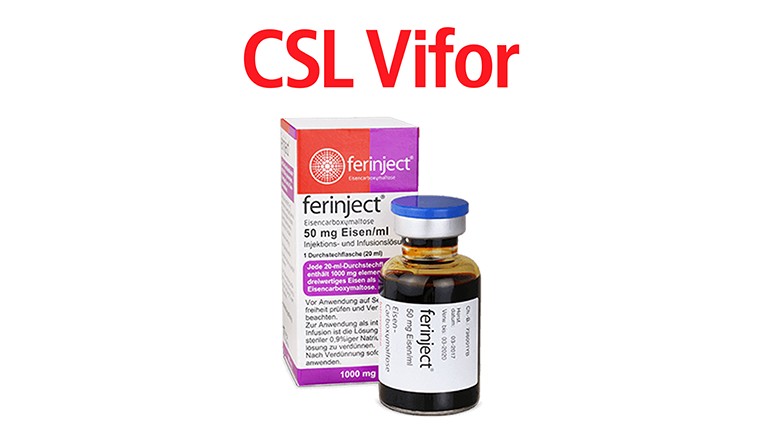Delhi High Court demystifies law on product-by-process claims
16 February 2024

Photo: viforpharma.com
Switzerland-based Vifor, a global leader in iron-based therapies and patentee of an invention covering ferric carboxymaltose (FCM), had filed a suit against entities that were also making FCM during the term of the patent. FCM is used for the treatment of iron deficiency anaemia. The patent is related to a “product-by-process” claim.
These entities were India-based pharmaceutical companies MSN Laboratories, Corona Remedies and Dr Reddy’s Laboratories. The defendants claimed they did not infringe the patent because their process for making FCM was different than the process given in the claims of the patent.
On July 24, 2023, the Learned Single Judge refused an interim injunction to Vifor by holding that a product-by-process claim was essentially a “process” claim for arriving at the given product. Vifor appealed the decision before the Division Bench (DB) of the Delhi High Court. On February 7, 2024, the DB pronounced its decision and set aside the decision of the Learned Single Judge. In a scholarly treatise, the court demystified the law on product-by-process claims. This is the only litigation in India to elaborate on this issue.
A summary of the findings of the decision is as follows:
- The Learned Judge has fundamentally erred in understanding product-by-process claims as being limited to a product obtained through a specific process feature.
- There is no justification to ignore the invention (a product) merely because the patentee chose to fully describe the product with reference to its means of production (a process).
- Once the Judge had accepted FCM to be a product-by-process claim, it was incorrect to confine the scope of the claims to a particular process.
- Because the validity of the patent was not in challenge, the court ought to have answered the issue on infringement de hors the process.
- Product-by-process patent is founded on a claim relating to a novel product whose unique attributes are sought to be explained by reference to its manufacturing process. These patents owe their genesis to cases where new products could not be fully described by their structure compelling the patent applicant to rely upon and refer to the process features.
- Rule of necessity – Accepting the possibility of structurally undefinable products; Product-by-process patents are neither unconventional nor unknown in the Indian Patent Regime.
- Product-by-process claims involve novel, unobvious products. A known product produced by a new process is not novel.
- Product-by-process claims are tested on the touchstone of novelty of the product. This principle is common across IPO, EPO and USPTO.
- Various judgements hold that in product-by-process claims, for determining novelty of a product, one must disregard the process terms.
- Dichotomy between a product and a process is not liable to be viewed as operating in a water-tight compartment.
- Claim protection over process does not act as a limitation on a product, in a product-by-process claim.
- Any reference to process in a product-by-process claim acts as an aid to explain the novel attributes of a new product unknown in the prior art.
- Separate tests of novelty do not apply between grant of patent and the examination of an allegation of infringement.
- Mere fact that the patentee chooses to describe the invention more exhaustively by reference to process terms does not call for distinct test for novelty during grant of patent and during evaluation of infringement.
- Double standard approach – If a product is novel and inventive, and satisfies patentability criterion, then there is no justification to disregard the novelty and inventiveness of the same product, in an infringement scenario.
- Sections 107 and 64 of the Patents Act, 1970 buttress this point. If, in an infringement action, a defendant can challenge the validity of the patent as a ground of non-infringement, then why must the test for infringement disregard the novelty of the product?
- There is a distinction between a product which is “obtained by” and “obtainable by” a process.
- The expression “obtainable by” conveys a descriptive process only. This doesn’t mean that the process is the inventive element of the invention. This expression finds basis in section 48(a), which relates to product claims per-se.
- The expression “obtained by” conveys a direct linkage between the product and the process. Under the language of section 48(b), this expression is associated with process claims.
- A product-by-process claim would necessarily have to be examined on the anvil of a new and unobvious product irrespective of the applicant having chosen to describe the invention by referring to a process of manufacture. It would inevitably have to be tested on principles enshrined in Section 48(a). Mere usage of process terms cannot be accepted as limiting
- Ultimately, a product-by-process claim would have to meet the test of pertaining to a novel and inventive product as opposed to a process. It will thus be wholly incorrect to abridge or truncate a product-by-process claim to fall within the ambit of Section 48(b).
- The decision of Hospira UK was principally dealing with an ‘obtained by’ claim which is covered under Section 48(b) of the Indian Patents Act, i.e., where the claim is limited to a process alone. The decision also does not lay down the proposition that claim-construction is relevant for patentability, but not for infringement.
- Whether the product-by-process claim relates to or does not relate to an inventive product and is confined to a novel process, would essentially turn upon the facts of each case.
- The position taken by the U.S. decision of Abott Laboratories (holding process features as limiting the product-by-process claim) has not been accepted in any other jurisdiction. Even the Japanese Supreme Court in 2012 (Ju) 1204, Minshu Vol.69 No.4 did not accept that process terms are limiting or that they remove the focus from the inventive product itself and rejected the “double standard” approach with respect to tests for patentability and infringement.
- There is an imperative necessity to assess novelty and patentability of a product based on a consistent and unchanging criterion. One cannot have the position that the criterion for securing a patent is different from the criterion for demonstrating infringement.
- The submissions based on Abbott Laboratories proceed on the premise that a product-by-process claim would render the notional audience incapable of discerning the true intent of the patentee. That, however, is a question which relates to claim construction; submission fails to consider that the onus of proving infringement lies on the patentee.
- Whether it is a question of validity or infringement, the patentability of a product can always be assailed irrespective of the process terms. In fact, if a defence of invalidity were to be raised in a suit for infringement, it would be open for a defendant to assert that the patent has been wrongly granted either on the ground of a lack of novelty or otherwise being unpatentable.
- Patentability must be examined and evaluated independent of the allocation of a Conferral of an International Non-Proprietary Name (INN) to a chemical formulation. INN is not an irrefutable evidence of an invention; it is at best corroborative of an assertion of a patentable product having been obtained.
- Asia IP






